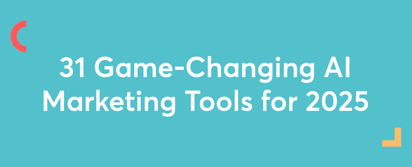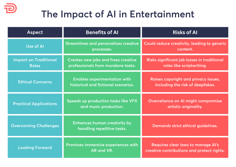AI in Gaming: The Future of Artificial Intelligence in the Game Development Industry
- 28 Aug 2024
- 11 mins read
- Posted in
Content:
- How AI is Revolutionizing Game Development
- Top Uses for AI in Game Development
- Pros and Cons of AI in Game Development
- How Gaming Companies are Gaining a Significant Edge Over Competitors
- Future Trends and Innovations in AI for Gaming
What is AI in the Gaming Industry?
AI in gaming development and the gaming industry refers to the use of artificial intelligence to create intelligent, adaptive behaviors in non-player characters (NPCs), enhance game design, and personalize player experiences.
“I used to be an adventurer like you. But then I took an arrow to the knee.”
Most gamers would instantly recognize this iconic line from the open-world role playing game, Skyrim. Every guard in the game, when approached, uses this line.
Logistically speaking, this is not so extraordinary. From a game development perspective, Non-Playable Characters or NPCs do not often get their own backstories or unique dialogues – they are usually only programmed with limited lines or actions. However, in this case, the same one line was repeated by every guard, every time – which led to it taking on a life of its own. Cue, the internet jokes, gaming retorts and of course, memes.
But now, with AI taking on a greater role in the industry, such limited NPC interactions are soon to be a thing of the past. Just one of the many ways in which the world of gaming is set to evolve! AI game development is rapidly being used to create adaptive, responsive, customized gaming experiences for players.
How AI is Revolutionizing Game Development
With industry innovations set to get richer and more immersive, let us look at how exactly AI is shaping transformation.
Where AI is Enhancing Game Development
- NPC behavior: Until now, non-playable characters only existed to further the storyline in certain pre-programmed ways – a gamer would only be able to ask them specific questions and receive the set responses, hints or directions. With new AI advancements, the possibilities are becoming virtually limitless. Interacting with NPCs may soon be just like talking to a real person – with their own lives, emotions and eccentricities.
- Creating game assets: Each single frame of a game is made up of a staggering number of art assets. For example, even an empty street has elements like cobbles, stones, trees, shrubs, puddles and more – elements that represent hours of hard work by game designers and artists. With AI-driven asset creation capabilities, this is becoming faster and easier. This is paving the way for artists to play to their strengths and design entire worlds with ease, without the time-consuming task of designing individual, repetitive elements.
As freelance designer, Gary Barber states, ‘I see AI as a complementary tool to do some of the 'heavy lifting' to enhance the creative potential of designers and not necessarily replace them, at least yet, I hope!’ - Enhanced storytelling: AI can drive similar advantages in terms of game storytelling too. Traditionally, the storyline of a game is pre-imagined by the developers – and every player plays it out with only minor variations. So for example, two players can perhaps take two different paths but they’ll ultimately lead them to the same place. With AI’s generative capabilities, however, unlimited storylines become a real possibility. A gamer can play a game knowing that each action they take will lead to diverse scenarios unfolding – with assets and new worlds being created in real-time.
- Player Experience Modeling (PEM): Players’ data can also be analyzed with AI to generate insights about their skills, preferences and behaviors. This enables game developers to offer customized gameplay options. So for example, if a player shows a preference for inspecting each element in a room, PEM innovations will adapt the game to include more such elements for them to find and interact with. Similarly, it can also adjust difficulty levels based on a gamer’s capabilities.
- Automated playtesting: Before a game is released, it is painstakingly tested out to identify bugs and glitches, spot gameplay loopholes, and check out the feasibility of various difficulty levels. Tested by humans, it can take months. But now AI playtesting is cutting down this time drastically by scanning thousands of test scenarios in a matter of days – thus speeding up production time.
Key Types of AI in Gaming
So what are the different types of AI technology that are making these incredible advancements possible? Let’s have a look:
- Pathfinding AI: This is the technology that tells NPCs where to go and how to get there. So rather than following pre-set paths, pathfinding AI programs NPCs to be able to navigate each space in the game in more realistic ways – walking around obstacles, gauging the areas they cannot walk through, and taking the best route from Point A to Point B, just like a real person would.
- Finite state machines (FSM): This prompts non-playable characters to switch from one state to another. For example, a guard may be passively patrolling a certain area in a game. When a player approaches, it is the FSM model that programs the guard to respond – maybe by chasing the player, or attacking them if they are close enough, or by looking for them if the player hides.
- Behavior trees: This type of AI model includes sequences of conditions and actions – each defining NPC behavior. For example, a villager in a game may react in a certain way when a player approaches. But when it is not being interacted with, it won’t just stand immobile. It will be programmed to act in different ways based on certain conditions. It may sit down if it spots a bench nearby, doze under a tree, go into a house and shut the door – and so much more. AI is making these actions more richer and diverse than ever.
- Rule-based AI: With a world of possibilities for non-playable characters, rule-based AI is what keeps them behaving in consistent ways. It won’t be much of a game if an NPC decides to walk away when a player is trying to interact with them! Rule-based AI is what stops them from doing this, ensuring they follow a set of predefined rules.
- Machine learning AI: This kind of AI model is what keeps a game interesting! It learns from players’ responses and programs NPCs to modify their reactions. So if you use the same combat moves each time while playing a game, the machine learning model will prompt NPCs to pose new challenges – keeping the game from becoming repetitive.
- Reinforcement learning AI: This is what guides NPCs to learn based on the results of their own actions and react in more realistic ways. For example, if an NPC tries to take a certain action without any success, it will try new things rather than attempting the same action over and over again.
Top Uses for AI in the Gaming Industry
Now that we’ve looked at how AI technology is evolving in the gaming industry, what do these innovations mean for the players? How are they going to create richer, newer gaming experiences each time?
-
Enhancing Player Experience
One of the key advantages will be the lack of repetitive NPC interactions. Robotic NPC behavior (like the same line being repeated by all the guards!) makes the game experience less immersive – jolting players out of that world.
Done right, AI innovations can create deeper immersion through dynamic NPC behavior. A player can actually talk to a character and have them respond in new ways, while keeping emotional authenticity in mind. So if you approach an NPC and ask them for hints or directions, expect them to respond in ways that are true to their personality! A teenager, an old man and a child will all respond in very different ways.
In more advanced scenarios, a player won’t need to stick to a pre-programmed conversation pattern at all. You can ask a character about their day and they’ll respond just like a real person. -
Personalizing Gameplay
This holds true for the game storyline too. Each game will include a butterfly effect of actions leading to unique consequences. A player will not need to follow the linear storyline at all. Rather than pursuing the main quest, if a player chooses to stop at an inn, go through a different door or enter a new building, they can do so and have an entirely unique storyline unfold – with procedural generation creating each new environment in real time.
This means each player experiences the game in a very personalized way – no two game experiences would be alike, and you could potentially unlock new levels or worlds that nobody else has before. It also means each game becomes infinitely replayable, and it will feel like playing a whole new game each time, with unique characters and stories. -
Improving Game Graphics and Animations
Low resolution assets will be a thing of the past, with AI being used to create highly photorealistic graphics. Elements like fire, water, dust and foliage movements are very difficult to animate, and developers often resort to repetitive patterns and textures. With AI simulations, developers would be able to replicate the fluidity of these elements exactly as they would appear in real life. This again, will contribute to a more immersive experience. -
Facilitating Real-Time Strategy Adaptation
Each game will adapt to a player’s actions in real time, creating a customized experience tailored to that player’s preferences. If you prefer puzzles and exploration, the game will throw up more assets for you to discover and solve. Someone who enjoys more combat and action may encounter more enemy attacks.
This customization can also happen based on the individual player’s capabilities. The game will be able to assess when a player is being able to overcome challenges too easily. It will then adjust its difficulty levels to generate adversaries that pose a real challenge! -
Optimizing In-Game Economies
Paid assets and new levels are a big part of in-game economies and AI will be able to optimize this based on player data.
AI algorithms can be used to predict exactly what kind of tools, accessories, levels and other in-game purchases you might want as a player – similar to how you see social media ads based on your interests today. Except in this case, AI will be able to actually create new assets from scratch, just for you.Going a step further, NFT integrations can then be used to enable players to make their purchases with ease and without stepping out of the game world.
Pros and Cons of AI in Game Development
-
Advantages of AI in Gaming
As seen above, the obvious advantage will be a deeply immersive, highly personalized gaming experience. After all, you are bound to enjoy a game that seems to be made just for you – with elements you like, a storyline that appeals to your sensibilities and with a difficulty level that’s just challenging enough to keep you intrigued.
In the context of multi-player games, AI can also help ensure fair play by using advanced algorithms to detect cheating. -
Challenges and Ethical Considerations
But there are potential challenges too – with data security being a primary concern. A lot of the customizations we have explored above are only possible through in-depth analysis and tracking of player data. So game developers will need to invest in top-notch security protocols and maintain complete transparency to assure players on exactly how their data is being gathered, stored or used.
Additionally, many developers and gamers are concerned about the flipside of unlimited storylines and world building. While limitless options are attractive, these worlds will necessarily have to be AI generated, with no human influence. The speed and scalability can come at the cost of artistic depth, emotion and human nuance.
Finally, there’s also the possibility of gaming jobs being impacted, with AI replacing human professionals. In our recent report, 60% of freelancers expressed concerns around being replaced by AI – and 59% shared concerns around reduced fees. This is already making an impact, especially in 2D art for gaming.
How Gaming Companies are Gaining a Significant Edge Over Competitors
-
Leveraging AI for Market Insights
On the business side of things, AI is sparking fantastic potential for game developers. AI-driven market data analysis is helping them stay informed about what kinds of games players are responding positively to, what updates they are looking forward to and what gaps they are seeking to be filled.
These insights are extremely valuable as they take crucial decisions about upcoming titles – they can use the data to create offerings that will cater to fast-evolving market needs. -
Accelerating Development Cycles
Sophisticated AAA games take at least 3-4 years to develop – from conceptualization to asset creation and then on to testing. But now, we have already seen how AI can speed up many of these processes. Artists can use AI game development tools to create props and repetitive elements faster; automated testing can be done in a fraction of the time it used to take before and so on. This means game developers who leverage AI will be able to enjoy shorter development cycles, with new games coming out in months. -
Enhancing User Engagement and Retention
More customized and personalized game experiences would mean more engaged users. Players will interact with a game on a deeper level, playing it multiple times, and trying out different variations. Developers will offer more relevant in-game purchases that they know that players will want to buy. These factors will contribute to loyal gamers who go on to become repeat customers. -
Reducing Development Costs
Finally, there’s also the cost considerations to keep in mind. AAA games often take up to a quarter billion dollars to create – and that’s before you account for marketing budgets. With AI technology streamlining some of the more repetitive processes, it can help keep costs down.
Future Trends and Innovations in AI for Gaming
-
AI in Cloud Gaming
With AI fuelling better cloud server performance, we can expect games to be more platform agnostic – with games being played in the cloud rather than being downloaded onto devices. This would mean more on-the-go gaming as users will be able to resume playing anywhere and across any device, with their progress being saved in the cloud. -
Personalized Gaming Experiences with AI
Developers are already experimenting with AI-generated worldbuilding and limitless unique experiences within a game. But this sets the foundation for even greater possibilities for personalization. Think – an entire game, created just for an individual player, based on their specific preferences for worldbuilding, action, and other elements.
This kind of innovation is obviously still some way away, but the possibility of this coming to pass someday cannot be discounted. -
AI-Enhanced Virtual Reality (VR) and Augmented Reality (AR)
With AR and VR technology becoming more sophisticated and affordable, the AR/VR gaming market is already growing at a breakneck speed – and is expected to hit $10.11 billion by 2029. It’s only a matter of time before the hyper-personalization of AI gaming is brought together with the complete immersiveness of AR/VR technology.
This will mean that not only will a player be able to enjoy a world conceptualized just for them, they will be able to step into that world and even invite friends to join them in enjoying these uniquely interactive experiences. -
AI's Role in E-Sports and Competitive Gaming
AI tools will be indispensable training resources for professional gamers. Imagine a coach that analyzes gaming data in real-time, identifies their unique strengths and weaknesses and helps them modify their strategy as they go along. It can also throw them personalized challenges to help them develop their skills in specific areas.
The world of e-sports broadcasting is set to get more engaging too. AI tools can be used to extract clips from streams, create data visualizations in real-time, generate more exciting commentary and develop better e-sport marketing strategies.
Case Studies: Success Stories of AI in Gaming
Many of the AI innovations we have discussed above are still in the prototype phase. However, developers, designers and even users are already experimenting in new ways that are breaking traditional limitations in gaming.
-
Real-World Applications and Outcomes
Campfire’s Cozy Friends is one example of how AI is being used to spark meaningful connections in gaming. Cozy Friends is a virtual village populated by adorable animals. But these LLM-based villagers are able to interact in startlingly real ways – one can actually talk to them about how their day is going or ‘gossip’ about the other characters!
Coming back to Skyrim and its meme-worthy NPCs – one user has taken matters into their own hands, and leveraged AI tools like ChatGPT to modify NPC interactions. Though the overall storyline remains the same, these ‘mods’ have opened up NPC vocabulary so they can now talk to players, even remembering past interactions with them to have a richer conversation.
-
AI Innovations by Leading Game Developers
Meanwhile, over at Ubisoft, an R&D team has come up with NEO NPC – a project that uses generative AI to enable NPCs to have real conversations. The characters’ backstories are created by writers, and it is these backstories that determine the language, emotions and expressions that the NPCs will communicate. Though still in the prototype stage, Ubisoft is looking to develop this as a flexible AI game development tool that they can plug in, even for their smaller games.
Latitude’s AI Dungeon 2 is another example of AI-driven storytelling success. Dungeon 2 is a text-based adventure story where gamers can put in their prompts and have AI create unlimited storylines. The first Dungeon game was released in 2019 and garnered 100,000 players in a week. In 2021, Latitude went on to raise $3.3 million to develop their game with AI-generated storylines.
Conclusion: Embracing AI for the Future of Gaming
It’s incredible to think that these thrilling innovations are all still at the early stages of what AI can potentially uncover. Most game developers agree that AI in the gaming industry is only going to play a bigger role here on.
The challenge however, lies in utilizing AI technology in a way that’s ethical – and that retains the heart and soul of game storytelling. AI efficiency together with human creativity will be the winning combination for the future of gaming. So in the coming months, developers will need to collaborate more with game artists, producers, designers and other professionals who are not only the experts in their fields but are also equipped to leverage AI tools to the best effect.
Incidentally, AI innovations can be used to find and identify such experts in the first place! Here at the TalentDesk Group, we are thrilled to have recently launched Phoenix – a brand new AI-powered assistant that will help developers (among other industry professionals) to connect with the best and most relevant freelance talent from around the world. Together with the top professionals, game developers can look forward to unlocking new innovations, creative ideas and reimagined experiences that change the future of gaming.


Sanhita Mukherjee
Speak to us to find out how we can help you manage your creative workforce.
Related articles

31 Game-Changing AI Marketing Tools for 2025
Discover 31 game-changing AI marketing tools – from automation to personalization, these tools will revolutionize your campaigns and boost efficiency.

Why Businesses Should Invest in AI or Risk Getting Left Behind
Discover why investing in AI is essential. Explore the benefits of automation, decision-making, and staying competitive in an AI-driven future.

2024 Engineering Recap
See how we enhanced features and added automation in 2024 to improve TalentDesk user experience. Here's a full recap and a look ahead to 2025.

Top 12 Mental Health and Wellbeing Platforms for 2025
See the top mental health and wellbeing platforms for 2025. From guided meditation to mood tracking, get the best apps to support your employees' health.

How AI is Transforming eLearning
See how AI is transforming eLearning with personalized experiences, content, and predictive analytics, enhancing education for students and teachers alike.

Phoenix Rising: AI-Powered Freelance Talent Discovery Takes Flight
Discover Phoenix: the AI-powered assistant revolutionizing freelance talent discovery. Connect faster, smarter, and more securely with top freelancers.

Revolution or Disruption? The impact of AI in Entertainment & Media
Revolution or disruption? Our comprehensive article explores the risks & benefits of AI in entertainment & media. Read key industry insights and opinions.

Top 10 Best Video Animation Agencies
This is an overview of our favorite and best animation agency choices. Check out animation examples of these top animation agencies in our top 10 list.
How to Manage Subject Matter Experts
How to Manage Subject Matter Experts
Unlock the full potential of your projects with our expert guide on managing Subject Matter Experts. Learn strategies for effective collaboration.

Work, Reconstructed
Xenios Thrasyvoulou and Glen Hodgson discusses the main compliance issues that are faced today within the talent and HR sectors.
